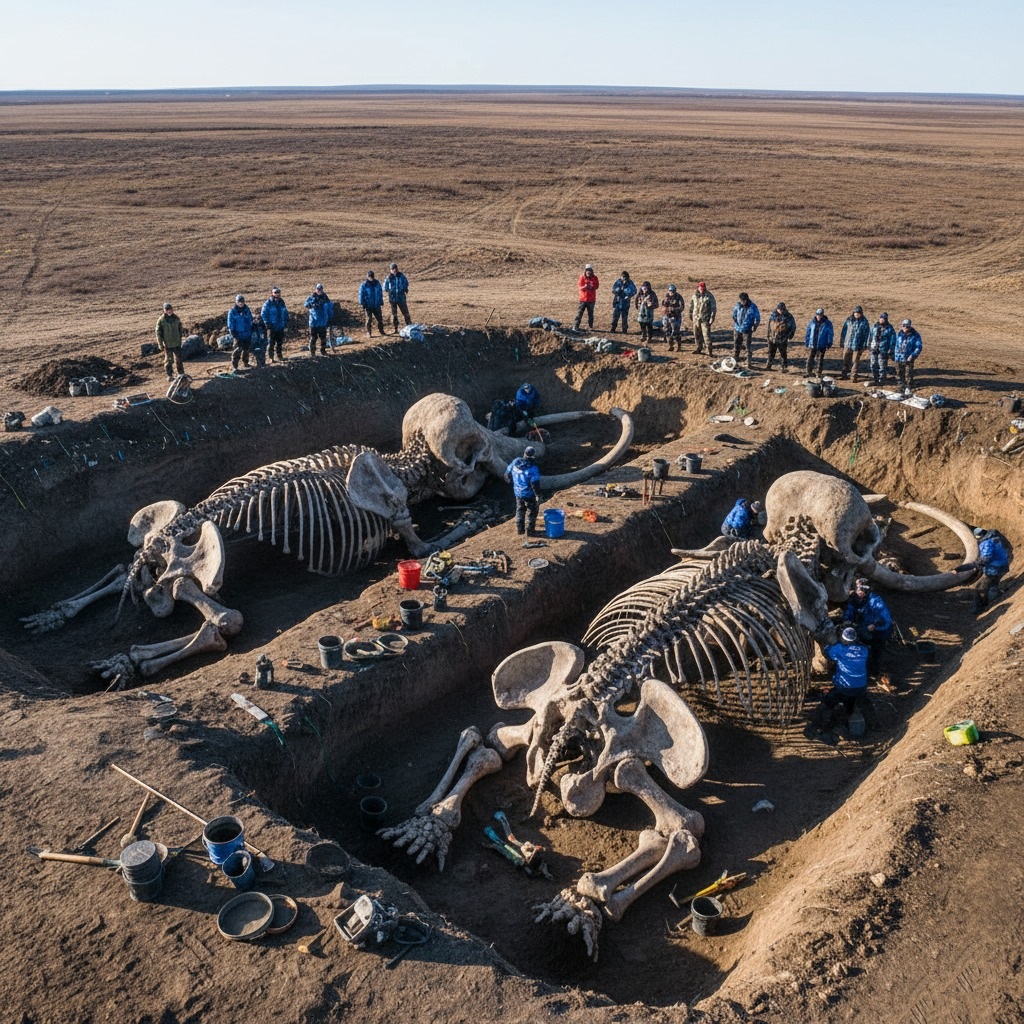Unearthing Giants: The Pleistocene Marvels of Siberia’s Permafrost

The biting Siberian wind, a constant companion, whispered tales of a forgotten era across the vast, frozen tundra. Dr. Anya Petrova, her breath pluming in the crisp air, peered down into the colossal excavation pit near the Kolyma River. It was the summer of 2008, and what began as a routine permafrost core sample had blossomed into the most breathtaking discovery of her career.
For decades, the Kolyma region, infamous for its unforgiving climate and rich deposits of ancient ice, had yielded tantalizing fragments: a tusk here, a molar there. But never anything like this. Below, meticulously cleared from the stubborn, thawing earth, lay not one, but two perfectly articulated skeletons of woolly mammoths, Mammuthus primigenius. They lay side-by-side, as if frozen in time, a mother and her calf, perhaps, or two formidable males locked in a primeval embrace.
Anya remembered the initial shock, the way the ground-penetrating radar had first painted the unmistakable forms. Then came the grueling work: teams of paleontologists, cryo-archaeologists, and local workers, bundled against the elements, chipping away at the frozen soil with specialized tools, painstakingly documenting every bone, every fragment of preserved vegetation that could offer clues to their demise.
The sheer scale was humbling. The larger mammoth, dubbed “Boris” by the team, stretched over four meters, its enormous skull and magnificent, curving tusks testament to its ancient power. Beside it, the slightly smaller “Olga” presented an equally awe-inspiring spectacle. Their bones, remarkably intact, promised an unprecedented window into the Late Pleistocene epoch, some 25,000 to 40,000 years ago, a time when these giants roamed the Mammoth Steppe.
Every day brought new revelations. Soil samples revealed microscopic pollen grains, painting a picture of grasslands teeming with life. Isotope analysis of the bone collagen would later tell tales of their diet and migrations across this very landscape. The hope, whispered among the team, was that the permafrost, nature’s ultimate freezer, might even yield preserved soft tissue, allowing for genetic sequencing that could unlock secrets of their evolution and perhaps, one day, even their resurrection.
As the sun began its long descent, casting dramatic shadows across the pit, Anya felt the profound connection to these ancient beings. They were not just bones in the ground; they were silent witnesses to a world long past, brought back to light by human curiosity and relentless dedication. The Kolyma River continued its timeless flow, but beneath its ancient banks, Boris and Olga were ready to tell their story, rewritten for a new age, thanks to the persistent spirit of discovery in Siberia’s eternal permafrost.
